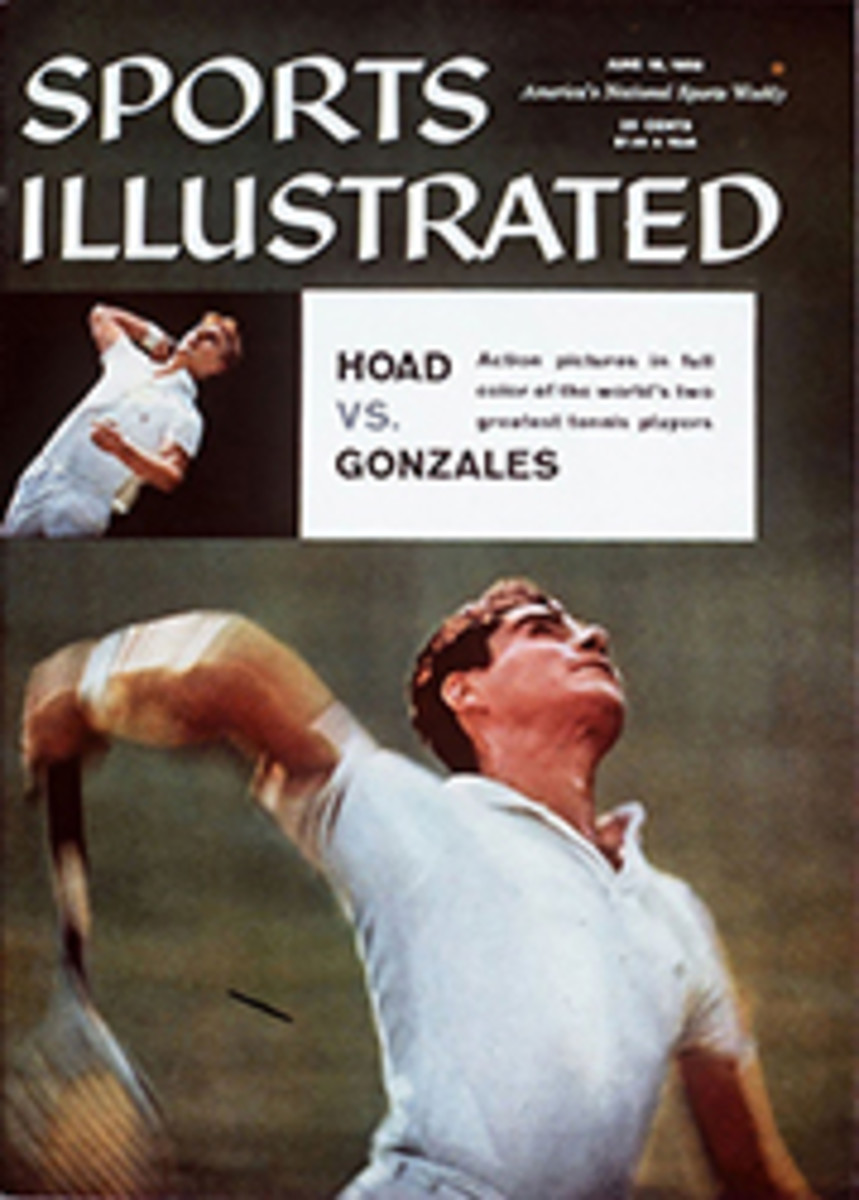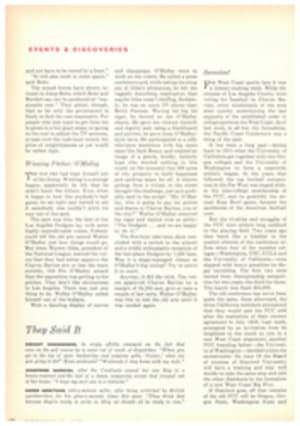
Lew and Pancho Serve up Tennis at its Very Best
Year after year the professional tour displays the grace and agility and power and endurance of championship tennis at its best. This year's stars—Pancho Gonzales of Los Angeles and Lew Hoad of Australia—are no exception, as the pictures on the following four pages prove. The long, movement-blurred figure in the foreground on the opposite page is the 6-foot 3-inch frame of Gonzales, the champion. In the opposite court Hoad is alert and wary, as a challenger of Gonzales should be.
For 20 weeks the two have been meeting night after night on the canvas courts of Promoter Jack Kramer's World Tennis, Inc. In the early weeks Hoad built up a lead which reached the startling proportion of 18 matches to 9. Then Gonzales began the long, enervating and eventually successful business of overtaking him. A fortnight ago, with Gonzales leading 48 to 34, Hoad was forced out of the tour for five matches by new trouble with an old back injury. Returning last week, he alternated between playing brilliantly and not playing at all—and so the 100-match contest may not be legally concluded until after the end of the American tour, which comes to its climax at the pros' annual round-robin tournament at Forest Hills this week. It was there last year—at the very start of the Hoad-Gonzales rivalry—that the photographs on the following pages were taken.
Leaping to get set for Gonzales' next shot, Lew Hoad is suspended for a moment, separated from his shadow by air
Serving with tremendous force, leaning into his game, taking a spill, Hoad is all action. Gonzales, erect and impassive, is all technique, long learned and automatic. But both men show equally the quality no good tennis player can be without: concentration.
Bad bounces, bad calls, bad luck—all can be borne with good grace. But a bad shot of his own brings Hoad a visible moment of pain.
SEVEN PHOTOS
MARVIN E. NEWMAN

